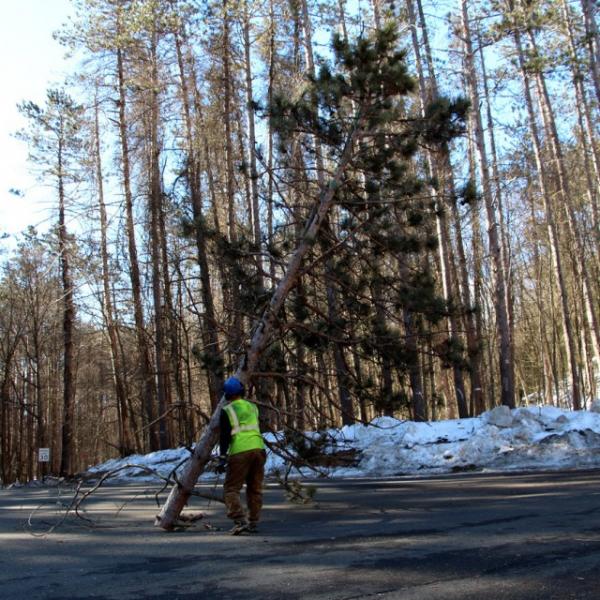
News Source
In the early 1920s, the city planted thousands of red pines in Leeds in an effort to protect the nearby watershed.
Almost a century later, the trees populating the city's water supply land off Kennedy and Chesterfield roads are dying off rapidly, in part due to an invasive insect called the red pine scale. The pest first spread in southern New England, New York, New Jersey and eastern Pennsylvania in the 1940s, and then emerged in New Hampshire and Maine in 2012.
The city Department of Public Works began removing the ailing trees - which had already been declining in health before the aggressive red scale came around - last week. Cotton Tree Services of Northampton has been contracted to do the painstaking work, said Nicole Sanford, senior environmental specialist for the DPW.
For the next two weeks, the city will be removing upwards of 2,000 pines from 21 acres of the city's water supply land. But that's just the beginning, Sanford said. Cotton will take down more than 11,000 trees in all on 200-plus acres of land over the course of two years.
An operation of this nature doesn't usually take this long, explained Michael Mauri, a licensed forester hired by the city for the job. But because the forest is transitioning from red pines to sugar maples, the pines are being cut down and lifted one-by-one over the tree tops by crane to preserve the latter.
"We're really bending over backwards to protect these trees," Mauri said Thursday.
Each tree takes about half an hour to take down. That's mostly because they're so big: The most enormous tower 100 feet above the forest floor and weigh up to 10,000 pounds.
Removing the trees won't cost the city anything, Sanford said; Northampton will actually profit by about $140,000, as the trunks will be sold for utility poles and the tree tops are being chipped for mulch.
Environmentalists have raised questions over how the tree removal operation might affect the local ecosystem and watershed. As a response, the DPW and Mauri led a nature walk through the Leeds property in November, during which they explained the relationship between the forest and water supply protection as well as the fate of the red pines.The city is hosting another walk on Monday, March 16, from 4-5:30 p.m.
Mauri noted that Northampton has nearly 3,500 acres of watershed land, and the parcels being logged are a relatively small portion of that. And the maples, a native species, will protect the watershed just as the pines did.
"The forest is dynamic, constantly changing and growing. It's not fixed," Sanford said. "It's still going to be a forest once the red pines are gone."